Introduction to Sensory Processing and Child Behavior
Navigating the complex world of children's sensory behaviors can be challenging for parents, educators, and caregivers. Recognizing the differences between sensory seeking and sensory avoiding behaviors is crucial in supporting children's development, emotional well-being, and social interactions. Sensory Processing Disorder (SPD) and sensory processing patterns play a significant role in shaping these behaviors, which often manifest distinctly across individual children. This article provides a comprehensive overview of the key concepts, signs, and strategies to support children with diverse sensory needs.
What is Sensory Processing Disorder and Its Role in Behavior
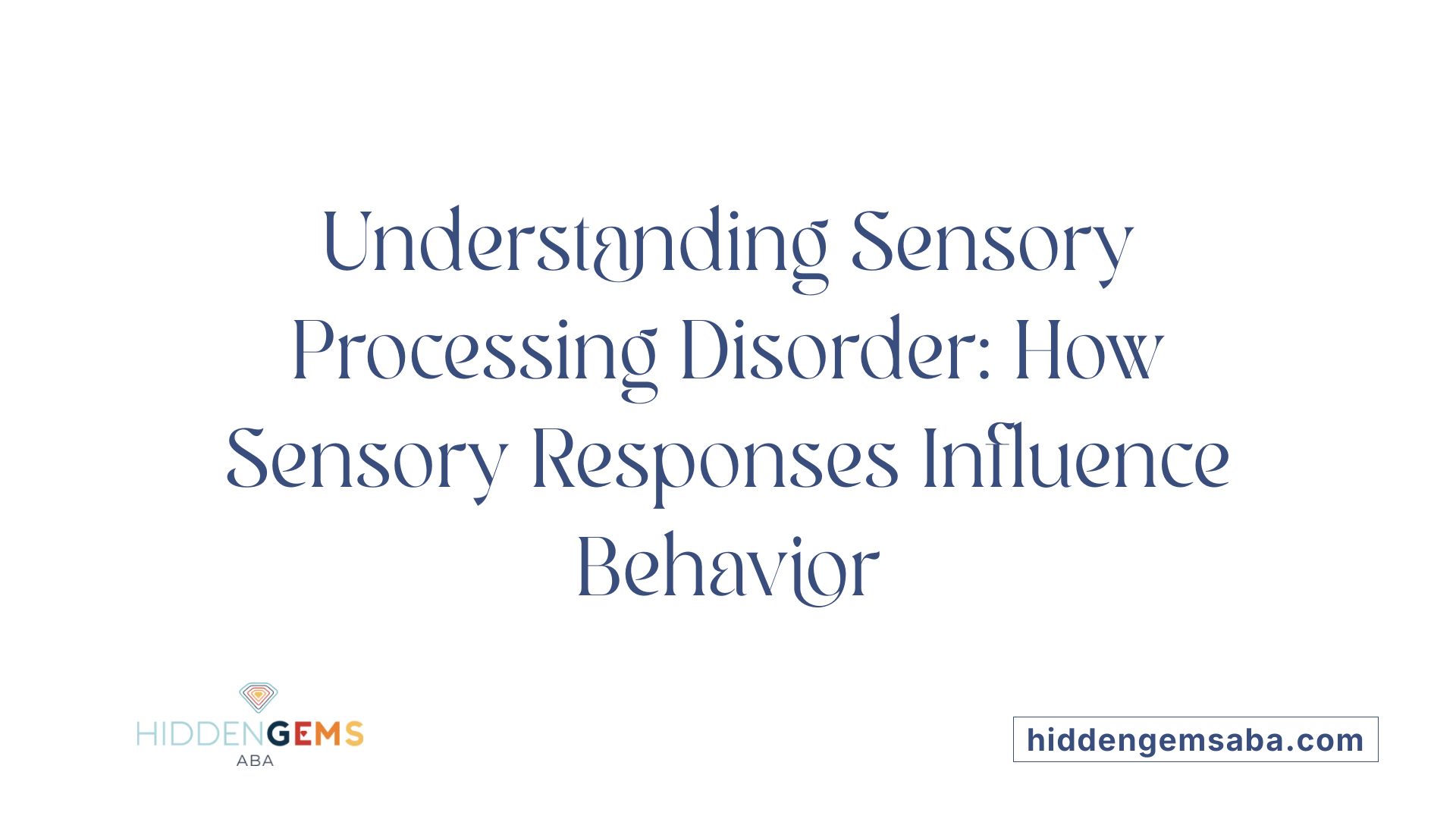 Sensory Processing Disorder (SPD) is a condition where the brain struggles to correctly interpret sensory information received from the environment and the body. This can result in children engaging in either sensory seeking or sensory avoiding behaviors.
Sensory Processing Disorder (SPD) is a condition where the brain struggles to correctly interpret sensory information received from the environment and the body. This can result in children engaging in either sensory seeking or sensory avoiding behaviors.
Children with SPD may seek intense sensory input to feel more balanced or alert. For instance, they might touch objects and people constantly, enjoy loud noises, or engage in rough play like jumping and spinning. These children are often underresponsive to stimuli, meaning they need more sensory input than typical to feel satisfied. Such behaviors—like chewing non-food items or crashing into things—are ways for them to meet their sensory needs.
Conversely, some children with SPD are oversensitive to sensory input, making them avoid certain textures, sounds, or lights. They might dislike being touched, become easily startled, and prefer quiet, calm environments. These children often perceive stimuli as overwhelming or even painful, leading to behaviors like covering their ears, withdrawing from social activities, or avoiding busy places.
These different responses influence a child's daily life significantly. Sensory seeking behaviors can sometimes lead to physical injuries or social challenges if not managed properly. Meanwhile, sensory avoiding behaviors might cause withdrawal and feelings of isolation.
Understanding SPD helps caregivers and educators develop strategies tailored to each child's sensory profile. Such approaches might include creating calming spaces, providing sensory toys, or using specific activities like swinging or deep pressure input to help regulate responses.
Overall, recognizing the connection between sensory sensitivities and behaviors supports more effective interventions, promoting better emotional and social well-being for children with SPD.
Distinguishing Between Sensory Seeking and Sensory Avoiding Behaviors
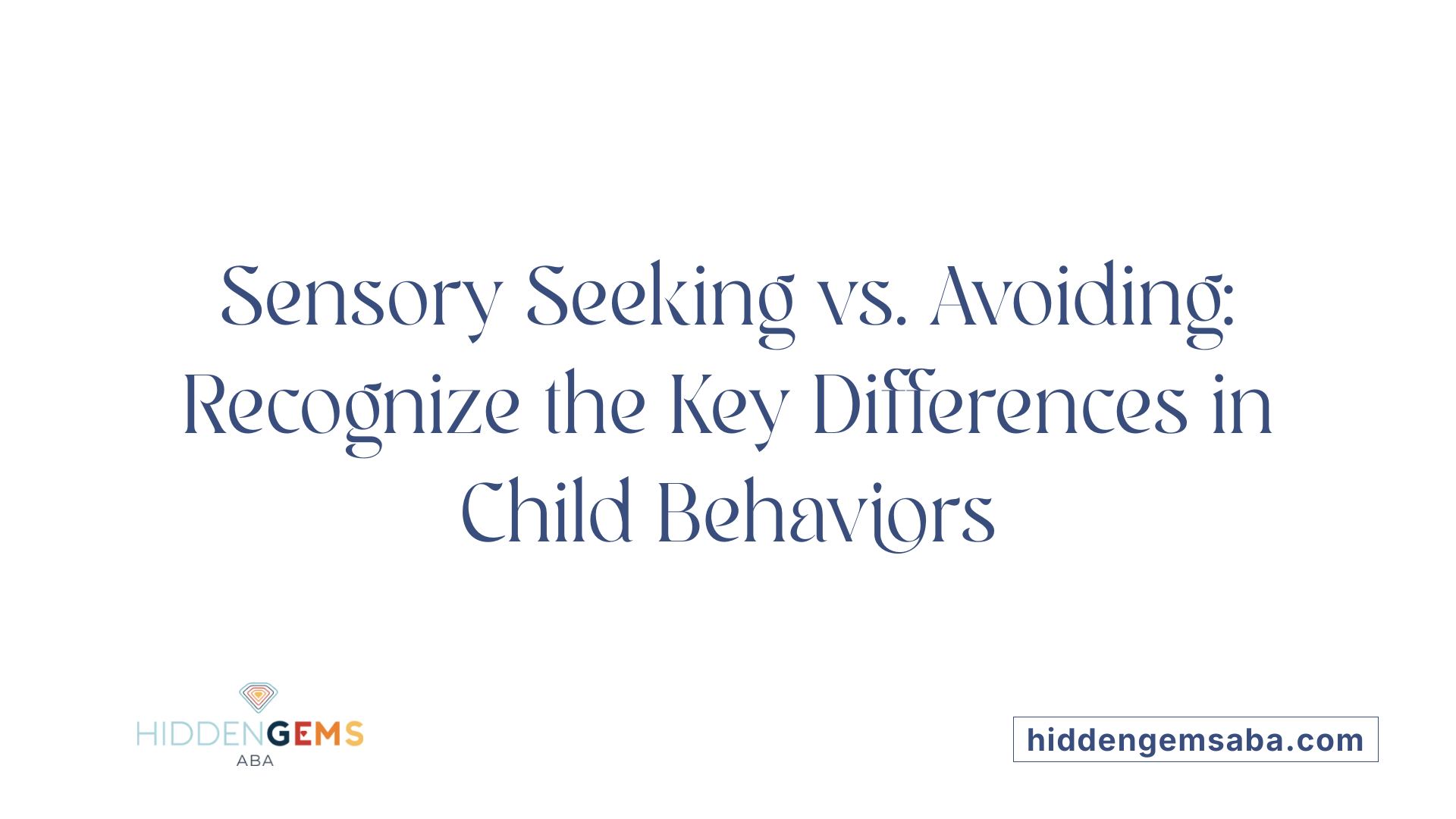
What are the differences between sensory seeking and sensory avoiding behaviors in children?
Children respond to sensory input in way that can be broadly categorized into two types: seeking and avoiding. Sensory seekers are often underresponsive to typical sensory stimuli, meaning they don’t react strongly and may actively look for more stimulation. These children might appear clumsy, loud, and enjoy rough play. They are often drawn to tactile or proprioceptive input, such as touching objects frequently, seeking loud noises, or chewing on non-food items. Their behaviors are driven by a desire to meet their sensory needs or address their low sensory thresholds.
On the other hand, sensory avoiders are usually oversensitive to their environment. They tend to be timid, dislike being touched or hugged, and are easily startled by sounds and bright lights. These children actively try to steer clear of certain textures, environments, or stimuli that overwhelms them, such as crowded places or loud music. Their reactions are often intense, like covering their ears or avoiding certain clothing or textures. Their low sensory thresholds mean they react strongly and are quick to withdraw from overwhelming situations.
Understanding these contrasting behaviors is essential for supporting children effectively. Providing sensory-rich activities and proprioceptive input can help seekings meet their needs without harm, while creating calm, low-stimulation environments and gradual exposure strategies can assist avoiders in managing their sensitivities. Recognizing these patterns enables caregivers and therapists to tailor interventions that improve comfort and functional engagement for each child.
Identifying Sensory Behaviors: Signs and Clues for Caregivers
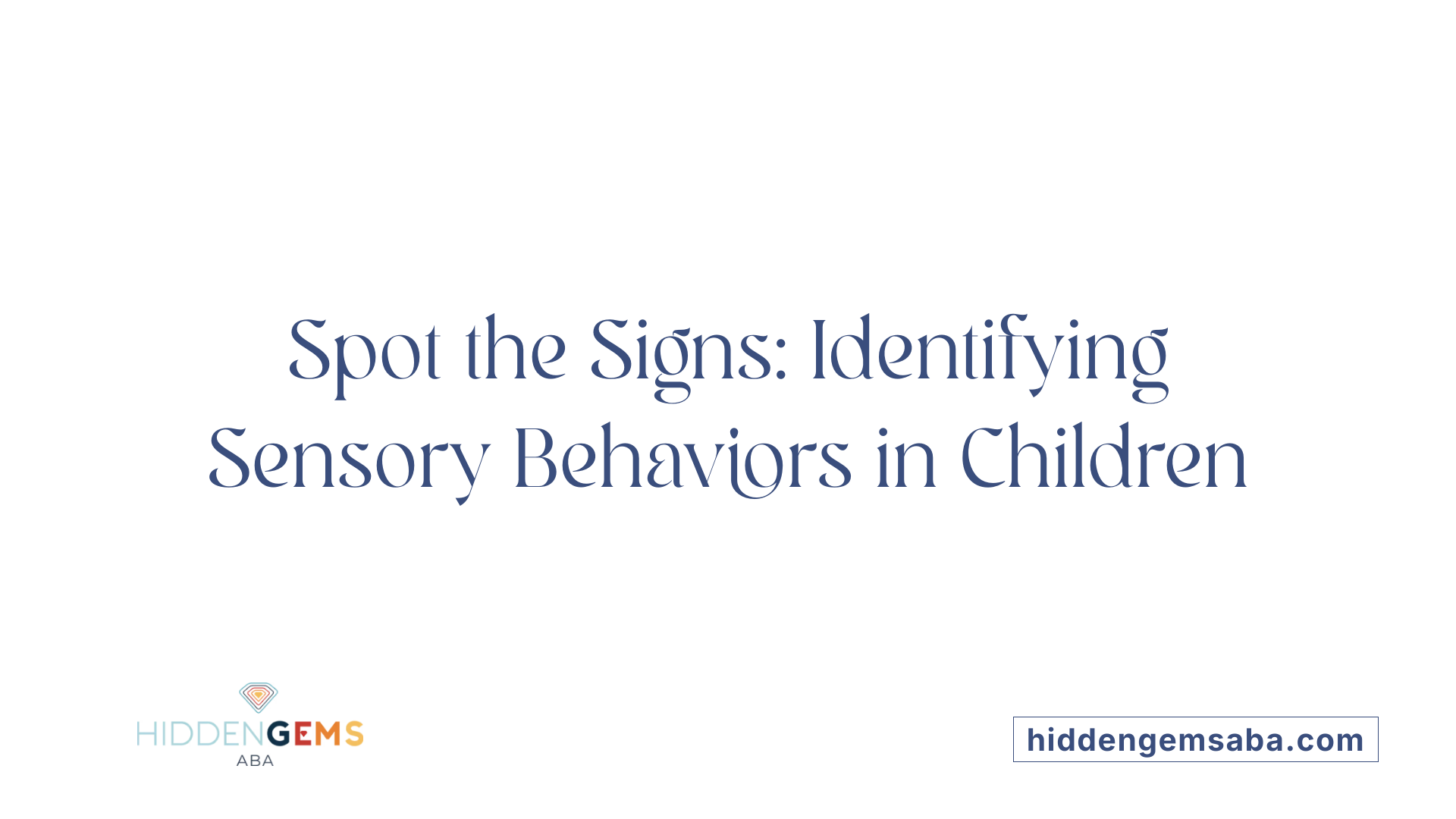
How can parents and caregivers recognize signs of sensory seeking and sensory avoiding behaviors in children?
Parents and caregivers can learn to identify sensory processing patterns by observing how children respond to their environment and sensory stimuli. Children who seek sensory input often display signs like touching objects and people frequently, rocking or spinning, and engaging in loud or rough play. These children might chew non-food items, enjoy messy activities, or seek movement through jumping or stomping, indicative of a high sensory threshold and a desire for more stimulation.
In contrast, children who avoid sensory input tend to be sensitive to textures, sounds, and lights. They may refuse to wear certain clothing, cover their ears or eyes when exposed to loud noises or bright lights, and shy away from touch or physical closeness. They often prefer quiet, calm environments and may withdraw or become irritable when overwhelmed.
Recognizing these behaviors involves noting patterns across different settings. Sensory seekers often look clumsy or overly affectionate, craving messy or heavy work activities, while sensory avoiders might seem timid or easily overstimulated, avoiding social interactions or certain activities.
Being attentive to whether a child actively seeks or avoids various stimuli helps caregivers tailor routines to support their needs. For example, incorporating calming activities like deep pressure or providing sensory toys can be beneficial. Understanding these signs allows adults to create environments that promote comfort and facilitate sensory regulation for children.
Understanding Sensory Processing Patterns in Children
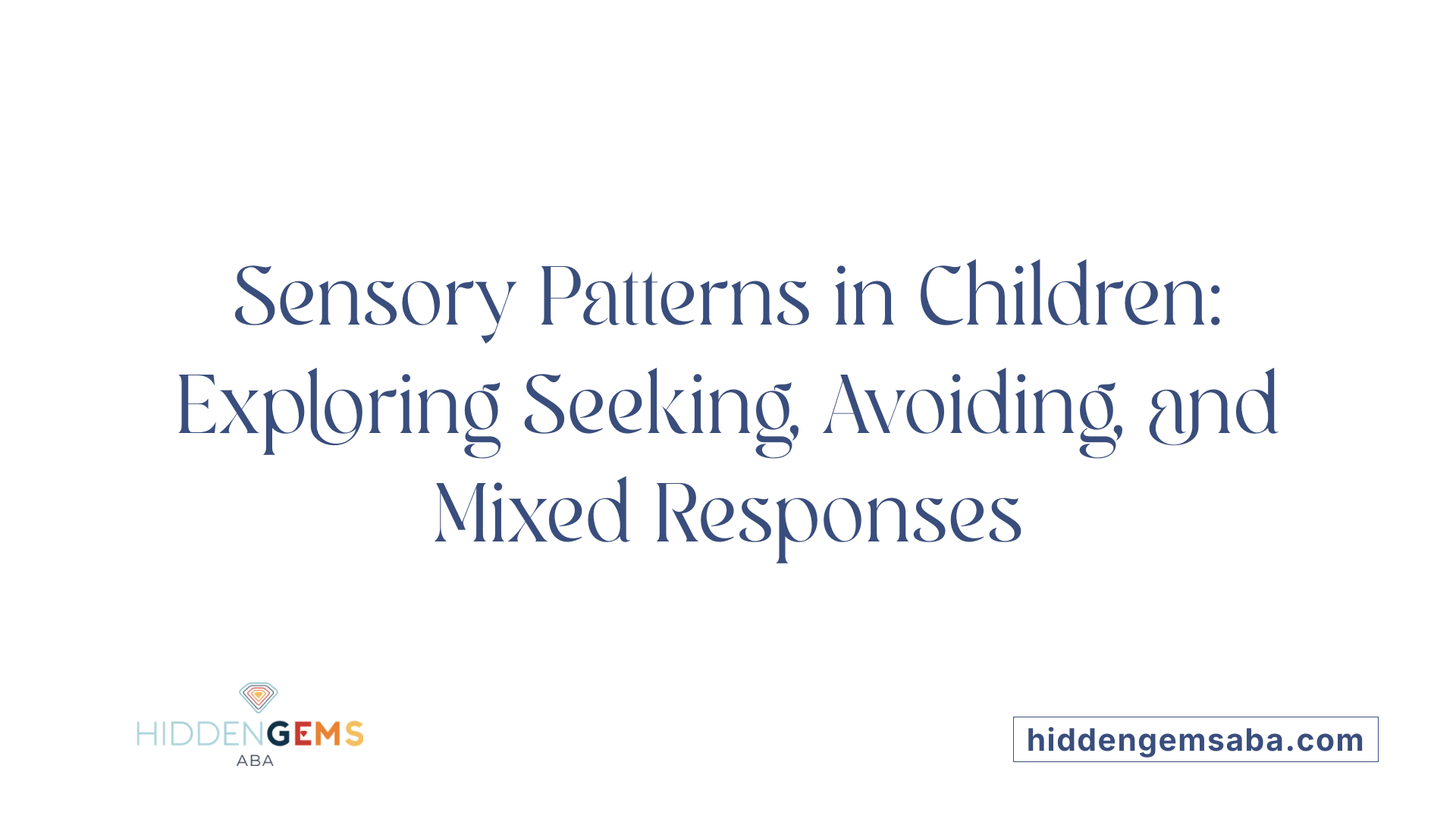
What are common sensory processing patterns related to seeking and avoiding behaviors in children?
Children exhibit different responses to sensory input, broadly categorized into seeking or avoiding behaviors. Those with sensory seeking patterns are often underresponsive to their environment’s stimuli, which leads them to pursue additional sensory experiences actively. These children might touch everything around them, make loud noises, and enjoy rough play, such as jumping or spinning, to meet their sensory needs. They tend to crave tactile or proprioceptive input, like being hugged or bouncing.
In contrast, children with sensory avoiding behaviors tend to be oversensitive to sensory input. They might react strongly to loud sounds, bright lights, or certain textures. These children often prefer quiet, calm settings and may avoid being touched or hugged. Their responses are typically characterized by withdrawal or covering their ears and eyes when overwhelmed.
These patterns are linked to how the nervous system perceives sensory information. Seekers have a high threshold for certain stimuli, meaning they need more input to feel regulated. Avoiders have a low threshold, reacting intensely to even mild stimuli to prevent overload.
Some children do not fit neatly into one pattern but display a combination of seeking and avoiding behaviors depending on the situation. Recognizing these patterns is essential for designing targeted support strategies.
Low registration and its effects
Another pattern involves low registration, where children do not readily notice or respond to sensory stimuli. They might seem uninterested, inattentive, or distracted because their brains are not registering incoming sensory information effectively. This can lead to challenges in responding appropriately to their environment and may be mistaken for disinterest or behavioral issues.
Poor sensory discrimination, where children struggle to interpret sensory inputs accurately, can exacerbate these challenges. Such children may require more intense or specific inputs to notice or react to environmental cues.
Mixed sensory processing and thresholds
Children can also have mixed sensory processing patterns, exhibiting both seeking and avoiding behaviors. These children may have different thresholds for processing various stimuli; for example, they might actively seek out certain sensations like tactile input but avoid others like loud noises.
Heavy work activities, which provide proprioceptive input—such as jumping or crawling—are often calming for children with mixed thresholds. These activities help regulate their nervous system, making it easier to participate in daily routines.
In summary, understanding these various sensory processing patterns—ranging from seeking and avoiding behaviors to low registration and mixed responses—is crucial for creating supportive environments. Tailored strategies, including sensory activities and environmental modifications, help children manage their sensory needs more effectively and engage happily in their surroundings.
Supporting Children with Sensory Differences: Strategies for Caregivers
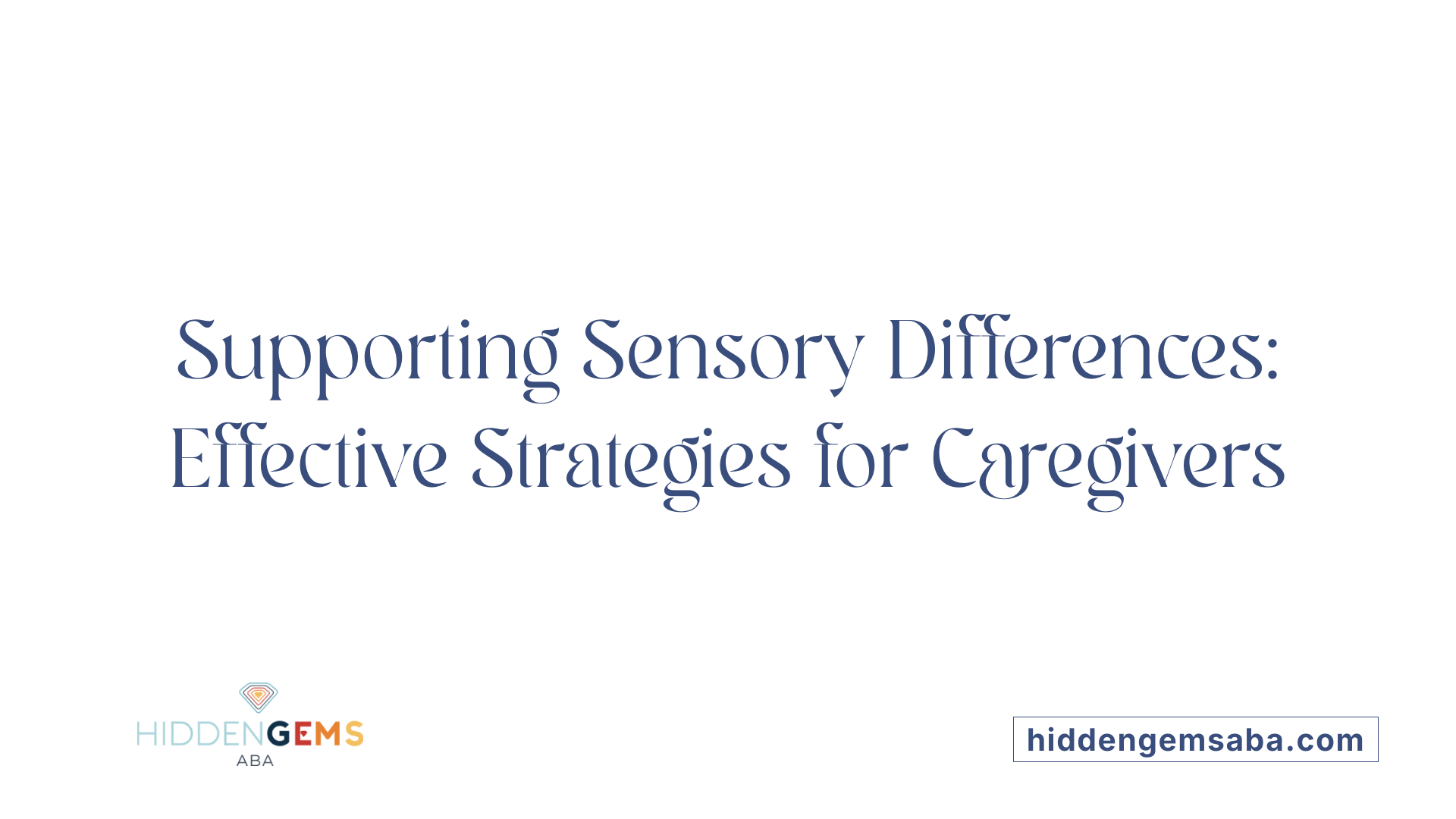
How can caregivers support children with sensory processing differences, including sensory seeking and avoiding behaviors?
Supporting children with sensory processing differences involves understanding their unique sensory preferences and responses. Caregivers can create a safe, predictable environment that minimizes unexpected stimuli, helping children feel secure and less overwhelmed.
Implementing sensory diets—personalized activities tailored to the child's sensory needs—is a practical approach. These activities might include sensory breaks, movement exercises like jumping or bouncing, or calming tactile and oral input such as using textured toys or chewy items.
Sensory tools are valuable in helping children self-regulate. Weighted lap pads can provide calming pressure, while chew toys help with sensory seeking oral input. Noise-canceling headphones can reduce auditory overload for sensory avoiders in loud settings.
Adjusting the environment further supports regulation. Dimming lights, reducing background noise, and offering access to quiet spaces help children manage sensory overload. Incorporating preferred sensory experiences, like soft fabrics or calming scents, can also be beneficial.
Collaboration with occupational therapists plays a crucial role. These professionals can develop tailored sensory diets and strategies that fit each child's specific sensory profile. Consistent application of these techniques promotes comfort, safety, and better functioning across home, school, and social settings.
Empowering Support Through Understanding and Adaptation
Recognizing and understanding the diverse sensory behaviors exhibited by children is vital in fostering supportive environments that promote their well-being and development. Whether a child seeks sensory input to meet their needs or avoids stimuli to prevent overwhelm, tailored strategies—guided by professionals and rooted in awareness—can significantly improve their quality of life. By adjusting routines, environments, and interventions, parents and caregivers can help children achieve better regulation, social engagement, and emotional balance, ultimately empowering them to thrive in various settings.
References
- Sensory seeking and sensory avoiding: What you need to ...
- Sensory Seeking vs Avoiding
- When Your Child is Sensory Seeking And ...
- Four Patterns of Sensory Processing
- Recognizing Signs of Sensory Processing Disorder
- Sensory seeking and sensory avoiding: What you need to ...
- Sensory Processing Disorders in Children and Adolescents
- Four Patterns of Sensory Processing
- Sensory Processing






